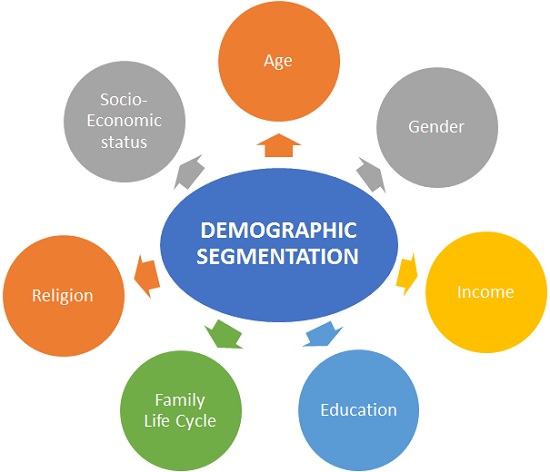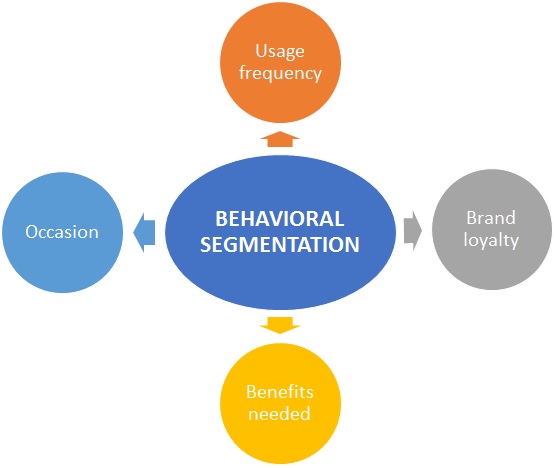
MARKET SEGMENTATION
November 13, 2018MARKET SEGMENTATION IS A NATURAL RESULT OF THE VAST DIFFERENCES AMONG PEOPLE (Donald Norman)
Market segmentation is a process of dividing the entire market population into multiple meaningful segments based on marketing variables like demographics (age, gender etc), geographic, psychographics (lifestyle, behaviour) etc. Market segmentation in marketing is identifying a set of homogenous segments having similar needs, properties & demands which can be used by a company to sell their product/service more effectively.
Once an entire population is divided into market segments, companies can target them more accurately and design their positioning accordingly. This entire process is also known as STP (Segmentation, Targeting and Positioning).
Importance of Market Segmentation:
Market segmentation is an important aspect for any business as it helps them slice the market into smaller groups or segments, which can then be identified based on their needs and can be catered to. Market segmentation reduces the population in the market and gives a much more addressable audience rather than giving random groups of people. Having similar groups would enable companies to be more focused in terms of their product offerings, product differentiation strategies, marketing strategies, pricing strategies etc. This would help companies mitigate unnecessary risks, reduce costs, target customers better, have better retention and generate more profits. Hence, segmenting the entire population of market is essentially critical for any business to prosper.
Types of Market Segmentation:
The most important variables in market segmentation are based on demographics, geographic, psychographics & behavioural. These are explained in detail below:
1. Demographic Segmentation:

Slicing the market on criteria based on demographics like age, gender, income, family members, educational qualification, socio-economic status etc, is called demographic segmentation. This type of market segmentation helps in profiling the customers based on demographic parameters & help to form homogeneous groups.
2. Geographic Segmentation:

When a population is divided on the basis on geographies i.e. country, state, city, village, region, postal code etc, it is referred to as geographic segmentation. This market segmentation type helps form clusters based on location, topography, location etc.
3. Psychographics Segmentation:

Market segmentation done based on personality of people, their characteristics, their lifestyle, social status etc is called as psychographic segmentation.
4. Behavioural Segmentation:

When companies divide the market based on the customer behaviour or usage patterns, it is known as behavioral segmentation. This type of market segmentation considers the past behaviour of consumers.

The above image shows the STP (Segmentation, Targeting, Positioning) process & types of market segmentation
Advantages of Market Segmentation:
Market segmentation can have many benefits for companies which can benefit their business. Some are discussed below:
1. Segmenting a market gives focus to company as it helps to understand the market better
2. Unnecessary costs are avoided by efficient market segmentation as only the required population can be tapped
3. Segmentation can help companies identify newer markets where existing products can be launched
4. If certain overlapping markets are identified, companies can create new products to capture them
5. Once proper market segmentation is done, after identifying target groups accurately, advertising & marketing can be more effective rather than having loosely created ad campaigns
6. Homogeneous groups can themselves promote the products or services even more if they like it
7. Systematic market segmentation helps in market expansion and also helps in customer retention
Disadvantages of Market Segmentation:
Apart from the several advantages, there are also certain drawbacks of market segmentation. Some disadvantages are:
1. A company having multiple segments would have to cater to them separately i.e. more costs
2. Giving products/ services to multiple segments can be a time-consuming process for companies
3. If a company selects a wrong segment, their entire business can collapse
4. Smaller clusters/ niche markets often get neglected in the bigger scheme of things
Example of Market Segmentation
Let us take an example of a brand of chocolate cookies. If we have to launch these cookies in the market. We need to see whether we need to target everyone or some specific people in the population. Here is where market segmentation will help us get the answer. Let us consider the market. Market can be considered as a country if it is a local launch.
The marketer can use various variable as discussed above to slice the market. Should we use demographics or psychographics here for market segmentation?
Chocolate chip cookies is not a lifestyle or complicated product nor is it going to be very costly product. So demographic segmentation can help.
A marketer can use age and geography as variables to divide the market into multiple segments. Companies can get data for the population and then can use various statistical methods like multi dimensional scaling and factor analysis to come at simple variables. In this case, we can have segments like:
1. Geography: Urban / Rural
2. Age(years): 5 to 10/ 10 to 18/ 18 to 25/ 25 to 40/ 40 to 50/ 50+
Now the product being a chocolate cookie, people in the age group of 40 and above can be removed from both rural and urban. Also, as the product has chocolate, marketer can chose to target only to urban population for initial launch. Now 10 year old to 25 year old segment in urban can have people who love chocolate and would be willing to buy cookies on a regular basis. Now this can form a decent target group.
In practice the process is much more complicated, here it has been simply put. This way a company actually uses market segmentation to arrive at segments which can be further analysed to arrive at a target group.






